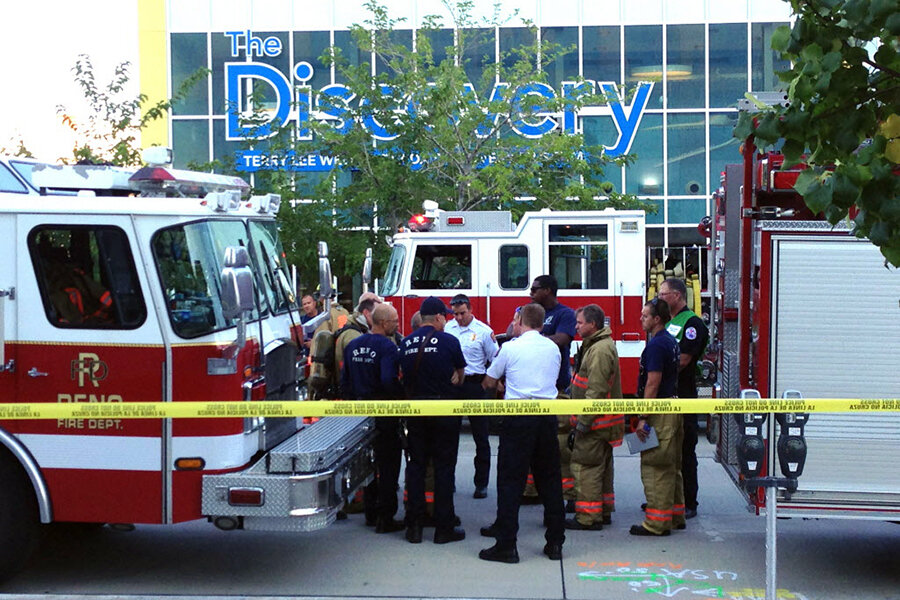Chemical mishap at Reno museum leaves 13, mostly kids, hurt
Loading...
| RENO, Nev.
A routine experiment designed to help children understand tornadoes erupted in a chemical flash at a Nevada museum, injuring 13, including children who suffered acid burns on their hands, arms and faces.
Emergency crews responded to a report of a possible explosion at 4:10 p.m. Wednesday at the Terry Lee Wells Discovery Museum in downtown Reno.
City of Reno spokesman Matthew Brown told The Associated Press that a preliminary investigation indicates it was not an explosion but a chemical flash, which is "similar to if someone threw gasoline on a fire." He said he couldn't comment further on the distinction.
Eight children and one adult were transported to a Reno hospital for minor burns or smoke inhalation, city Brown said in a statement.
Four other people were treated at the scene, but their ages were not available, he said. Officials at Renown Regional Medical Center expected only one child would remain hospitalized overnight for observation and likely would be sent home Thursday, Brown said.
Reno police Officer Tim Broadway had said earlier that several children suffered acid burns on their hands, arms and faces.
Officials said a methyl alcohol and boric acid mixture is used during the exhibition conducted each day to create a whirling tornado effect.
"The injuries were the result of a mishap of a routine museum demonstration that simulates a tornado," the city's statement said Wednesday night. "Reno Fire Department investigators are working with museum staff to determine what caused the chemical flash."
"Our primary focus right now is on Discovery patrons and their safety," said Mat Sinclair, executive director for The Discovery, in a statement. "All those affected by today's incident continue to be in our thoughts and we are committed to determining the cause of this incident."
KRNV-TV aired amateur video posted on its Facebook page that offered a glimpse of the explosion inside the museum. Run in slow motion, it appears to show a flash and flames falling off an experiment table and onto the floor several feet from a group of children who screamed when it happened.
Reno resident Joey Sanchez told the AP he was at the museum but didn't see the flash.
As he and his 3 1/2-year-old son returned from the restroom, he saw smoke and some children with injuries that looked like little red circles. Sanchez said he saw one child crying with an ice pack on his face.
"It didn't smell like anything caught on fire, it smelled like burning chemicals," he said.
Reno Fire Chief Mike Hernandez said the museum was evacuated, but the building didn't appear to receive any additional damage. A sign on the door indicated it would reopen as scheduled at 10 a.m. Thursday.
A hazardous materials team responded to the scene to ensure the explosion did not spew toxic gases throughout the museum, Hernandez said. He said the injured were transported to the hospital within 15 minutes. The street in front of the museum across from the federal courthouse was temporarily closed but reopened after 6:30 p.m.







